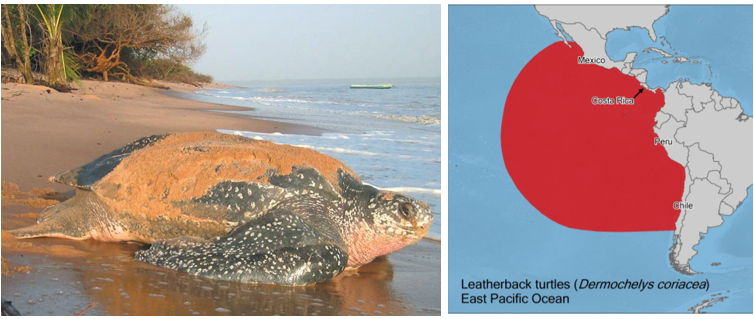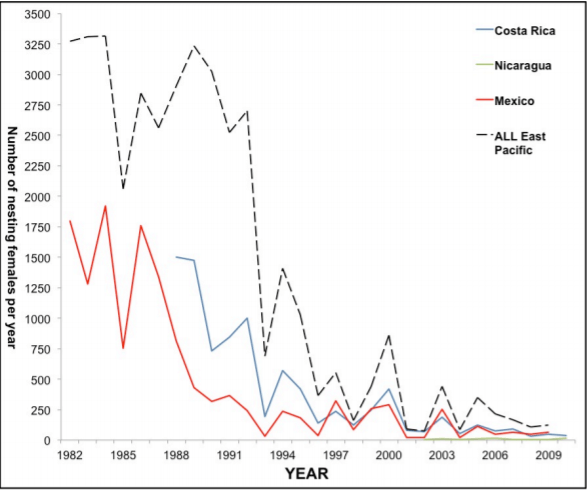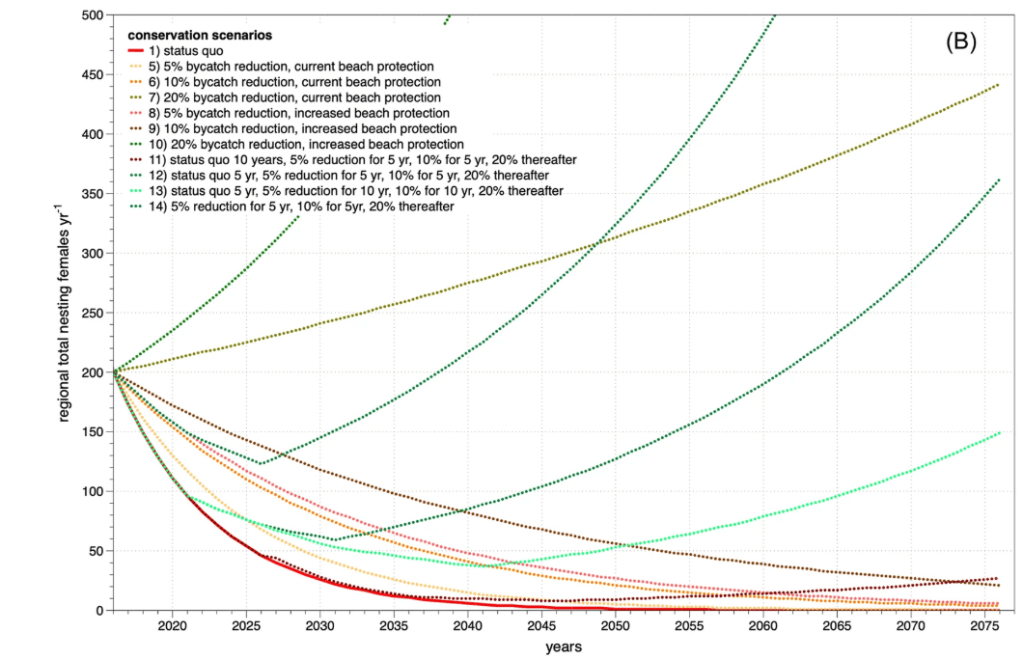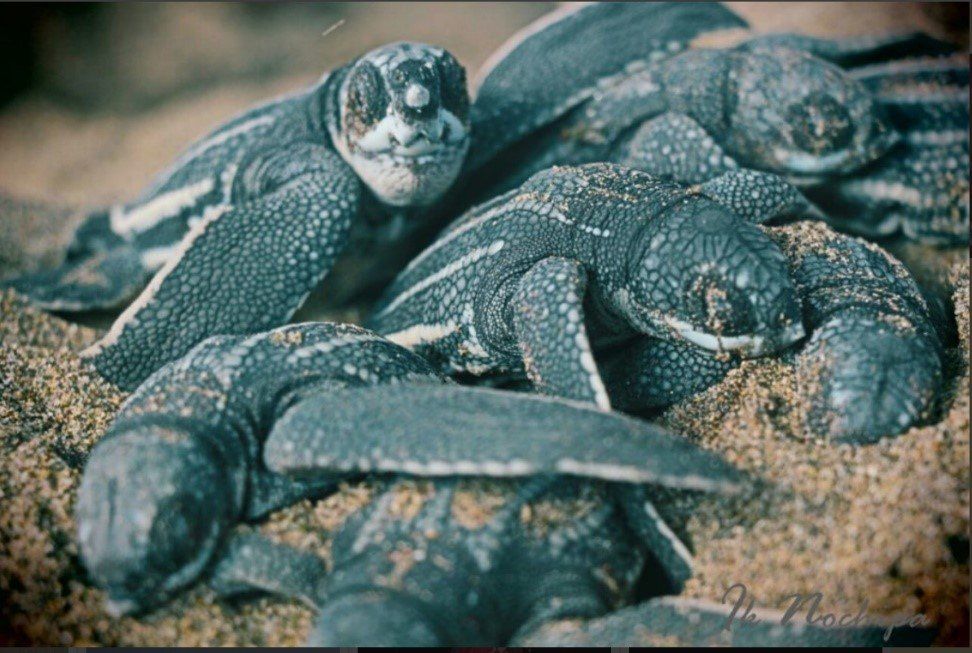Saving the World’s Most Critically Endangered Sea Turtle.
The Leatherback turtle Dermochelys coriacea has declined by up to 90% in the Eastern pacific (EP) over the last few decades and is classified under the IUCN Red list as critically endangered. Conservation efforts have focused on local subpopulations, but genetic studies suggest these belong to one metapopulation.
Here, a recent research paper has conducted the first population abundance estimate of the EP leatherback turtle metapopulation and its population trends over the next century, in an effort to guide conservation efforts and policymaking to stabilize and recover their population. The results indicate that unless action is taken over the next 10 years, they will face regional extirpation by this century.
Marine turtles evolved over 100 million years ago during the early Cretaceous from their terrestrial reptilian ancestors. Today, seven species of marine turtles exist, six of which are under the family of Cheloniidae including the Hawksbill (Eretmochelys imbricat a), Kemp’s Ridley ( Lepidochelys kempii), Olive Ridley ( Lepidochelys olivacea ), Green ( Chelonia mydas ), Loggerhead ( Caretta caretta), Flatback ( Natator depressus ) turtles and the seventh and last remnant of the family of Demochelyidae , the Leatherback turtle ( Dermochelys coriacea ).
The Leatherback turtle is the largest of living marine turtles, with a wide distribution around temperate and tropical waters of the Atlantic, Indian and Pacific Oceans. The Eastern Pacific (EP) Leatherback turtle is one of the most threatened regional management units of all marine turtles. A number of localised abundance estimations have taken place over the years, in particular in Mexico and Costa Rica, home to 90% of EP leatherback nesting grounds, alerting their population decline. Today, the majority of the EP leatherback nesting population has declined by more than 90%, where the annual breeding population of over 3000 individuals has decreased to less than 250 between 1982 and 2010.
A number of threats have resulted in its critical status, both anthropogenic and environmental. The biggest drivers of decline have been incidental capture by fisheries and harvesting of eggs for human consumption. In Chile, Ecuador and Peru alone, an estimated 47 000 sea turtles are caught per year of which 1,300 are lethal kills to EP leatherbacks. Meanwhile, ingestion of marine debris, poaching, coastal erosion and climate change has further undermined its resilience.
A new paper published in Nature’s Scientific reports, led by a group of researchers, conservationists and organisations from the Eastern Pacific Leatherback Conservation Network (Laud OPO Network) compiled and analysed data on nesting, by-catch and capture-recapture around Costa Rica, Mexico and other Eastern Pacific countries. Assessing this information, an abundance estimation of the EP Leatherback metapopulation was generated, along with population responses to varying levels of conservation efforts from 2016-2076.
The results indicate that if the status quo is maintained the EP leatherback will face extinction within the next 60 years. However, this can be remediated if appropriate conservation actions are undertaken in the next decade to increase their survival rate, in particular of the subadult and adult population.
In order to avoid extinction and increase survival of EP leatherbacks, two key critical metrics must be met in the next 10 years:
· Reduce by-catch mortality risk by 20%, in particular save between 200-250 AP adult and subadult leatherbacks per year.
· Increase protection of nesting sites and suitability conditions for incubation to yield an extra 7,000 to 8,000 hatchlings per year.
The reduction of by-catch should be enabled by increasing by-catch monitoring, safety procedures and increased market-based and incentivisation of good fishing practices. Whilst, the nesting grounds should be protected against predation, harvesting and coastal erosion and promote relocation to more suitable incubation conditions.
The recovery of the EP leatherback population is achievable, but will require an effective, immediate and continuous conservation effort among all stakeholders from citizens, non-governmental and government bodies through to international organisations and policymakers.
Short educational video on the Pacific leatherback turtle population by NOAA
References :
Ábrego, M.E., Acuña-Perales, N., Alfaro-Shigueto, J. et al. 2020 . Enhanced, coordinated conservation efforts required to avoid extinction of critically endangered Eastern Pacific leatherback turtles. Sci entific Rep ort. 10, 4772. https://doi.org/10.1038/s41598-020-60581-7
Ferraroli, S., Georges, J., Gaspar, P. and Maho, Y., 2004. Where leatherback turtles meet fisheries. Nature , 429 (6991), 521-522.
Spotila, R.J. 2004. Sea turtles: A complete guide to their biology, behaviour, and conservation. Johns Hopkins University Press.
LaudOPO, 2017a. REGIONAL ACTION PLAN FOR REVERSING THE DECLINE OF THE EAST PACIFIC LEATHERBACK. Retrieved from: https://savepacificleatherbacks.org/wp-content/uploads/2017/08/EP-Leatherback-Action-EN.pdf
LaudOPO, 2017b. Retrieved from: https://savepacificleatherbacks.org/
SHARE THIS ARTICLE


















